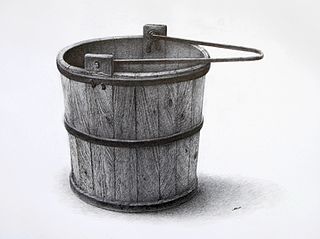Princesse Alice II Expedition (1898): Video summary¶
The map on the left shows the route of the Princesse Alice II (red and grey dots) and the locations of all the other pressure observations available to 20CR3 (yellow dots). The graphs on the right show the observations made by the ship (red and black dots), and co-located reconstructions from the 20CR3 ensemble (blue dots).
Based on the detailed figures for: Route and SLP. See those for the necessary data collection and pre-processing.
Script to make an individual frame - takes year, month, day, and hour as command-line options:
#!/usr/bin/env python
# European region weather plot
# Compare observations from 20CRV3 and Princesse Alice II
# Video version.
import os
import math
import datetime
import numpy
import pandas
import iris
import iris.analysis
import matplotlib
from matplotlib.backends.backend_agg import \
FigureCanvasAgg as FigureCanvas
from matplotlib.figure import Figure
import cartopy
import cartopy.crs as ccrs
import Meteorographica as mg
import IRData.twcr as twcr
import IMMA
import pickle
# Get the datetime to plot from commandline arguments
import argparse
parser = argparse.ArgumentParser()
parser.add_argument("--year", help="Year",
type=int,required=True)
parser.add_argument("--month", help="Integer month",
type=int,required=True)
parser.add_argument("--day", help="Day of month",
type=int,required=True)
parser.add_argument("--hour", help="Time of day (0 to 23.99)",
type=float,required=True)
parser.add_argument("--opdir", help="Directory for output files",
default="%s/images/Princesse_Alice_II_1898" % \
os.getenv('SCRATCH'),
type=str,required=False)
args = parser.parse_args()
if not os.path.isdir(args.opdir):
os.makedirs(args.opdir)
dte=datetime.datetime(args.year,args.month,args.day,
int(args.hour),int(args.hour%1*60))
# HD video size 1920x1080
aspect=16.0/9.0
fig=Figure(figsize=(10.8*aspect,10.8), # Width, Height (inches)
dpi=100,
facecolor=(0.88,0.88,0.88,1),
edgecolor=None,
linewidth=0.0,
frameon=False,
subplotpars=None,
tight_layout=None)
canvas=FigureCanvas(fig)
font = {'family' : 'sans-serif',
'sans-serif' : 'Arial',
'weight' : 'normal',
'size' : 14}
matplotlib.rc('font', **font)
# US-centred projection
projection=ccrs.RotatedPole(pole_longitude=180, pole_latitude=30)
scale=25
extent=[scale*-1*aspect/2,scale*1.5*aspect,scale*-1,scale]
# Map plot on the left
ax_map=fig.add_axes([0.01,0.01,0.98,0.98],projection=projection)
ax_map.set_axis_off()
ax_map.set_extent(extent, crs=projection)
# Background, grid and land
ax_map.background_patch.set_facecolor((0.88,0.88,0.88,1))
mg.background.add_grid(ax_map,sep_minor=1,sep_major=5)
land_img=ax_map.background_img(name='GreyT', resolution='low')
# Add the observations from Reanalysis
obs=twcr.load_observations_fortime(dte,version='3')
mg.observations.plot(ax_map,obs,radius=0.25,edgecolor=(0.2,0.2,0.2),linewidth=0.01)
# Plot the current position
obs=IMMA.read(os.path.join(os.path.dirname(__file__),
'../../../imma/Princesse_Alice_II_1898.imma'))
for ob in obs:
if ob['LAT'] is None: continue
if ob['LON'] is None: continue
if ob['YR'] is None: continue
if ob['MO'] is None: continue
if ob['DY'] is None: continue
if ob['HR'] is None: continue
# if ob['LI'] is not None and ob['LI']==3: continue
ob_dte=datetime.datetime(ob['YR'],ob['MO'],ob['DY'],int(ob['HR']))
if ob_dte<dte:
rp=ax_map.projection.transform_points(ccrs.PlateCarree(),
numpy.array(ob['LON']),
numpy.array(ob['LAT']))
ax_map.add_patch(matplotlib.patches.Circle((rp[:,0],rp[:,1]),
radius=0.2,
facecolor='grey',
edgecolor='grey',
alpha=1.0,
zorder=100))
if (ob_dte-datetime.timedelta(hours=1)<=dte and
ob_dte+datetime.timedelta(hours=1)>dte):
rp=ax_map.projection.transform_points(ccrs.PlateCarree(),
numpy.array(ob['LON']),
numpy.array(ob['LAT']))
ax_map.add_patch(matplotlib.patches.Circle((rp[:,0],rp[:,1]),
radius=0.2,
facecolor='red',
edgecolor='red',
alpha=1.0,
zorder=100))
mg.utils.plot_label(ax_map,
('%04d-%02d-%02d:%02d' %
(args.year,args.month,args.day,args.hour)),
facecolor=fig.get_facecolor(),
x_fraction=0.02,
horizontalalignment='left')
# Add the pressure timeseries
rdata=pickle.load(open('../analyses/20CRv3_comparisons/20CRv3_PRMSL.pkl','rb'))
ob_dates=([datetime.datetime(o['YR'],o['MO'],o['DY'],int(o['HR']))
for o in obs if
(o['YR'] is not None and
o['MO'] is not None and
o['DY'] is not None and
o['HR'] is not None)])
ob_values=[o['SLP'] for o in obs if o['SLP'] is not None]
rdata_values=[value/100.0 for ensemble in rdata for value in ensemble[3]]
ax_slp=fig.add_axes([0.55-0.005,0.80,0.44,0.18])
# Axes ranges from data
ax_slp.set_xlim((min(ob_dates)-datetime.timedelta(days=1),
max(ob_dates)+datetime.timedelta(days=1)))
ax_slp.set_ylim((min(min(ob_values),min(rdata_values))-5,
max(max(ob_values),max(rdata_values))+5))
ax_slp.set_ylabel('MSLP (hPa)')
ax_slp.get_xaxis().set_visible(True)
t_jitter=numpy.linspace(start=-6,stop=6,num=len(rdata[0][3]))
for i in rdata:
if i[0]>dte: continue
ensemble=numpy.array([v/100.0 for v in i[3]]) # in hPa
dates=[i[0]+datetime.timedelta(hours=t) for t in t_jitter]
ax_slp.scatter(dates,ensemble,
10,
'blue', # Color
marker='.',
edgecolors='blue',
linewidths=0.0,
alpha=0.1,
zorder=50)
ob_dates=([datetime.datetime(o['YR'],o['MO'],o['DY'],int(o['HR']))
for o in obs if
(o['SLP'] is not None and
o['YR'] is not None and
o['MO'] is not None and
o['DY'] is not None and
o['HR'] is not None)])
ob_values=([o['SLP']
for o in obs if
(o['SLP'] is not None and
o['YR'] is not None and
o['MO'] is not None and
o['DY'] is not None and
o['HR'] is not None)])
indices_past = [i for i in range(len(ob_dates)) if ob_dates[i]<dte]
if len(indices_past)>0:
ax_slp.scatter([ob_dates[i] for i in indices_past],
[ob_values[i] for i in indices_past],
50,
'black', # Color
marker='.',
edgecolors='black',
linewidths=0.0,
alpha=1.0,
zorder=100)
ax_slp.scatter([ob_dates[indices_past[-1]]],
[ob_values[indices_past[-1]]],
50,
'red', # Color
marker='.',
edgecolors='red',
linewidths=0.0,
alpha=1.0,
zorder=100)
# Output as png
fig.savefig('%s/V3vobs_PAII_%04d%02d%02d%02d%02d.png' %
(args.opdir,args.year,args.month,args.day,
int(args.hour),int(args.hour%1*60)))
To make the video you need to run the plot script thousands of times, making an image file for each point in time, and then to merge the thousands of resulting images into a single video.
This script makes a list of commands to plot a frame each hour over the voyage:
#!/usr/bin/env python
# Make all the individual frames for a movie
# run the jobs on SPICE.
import os
import subprocess
import datetime
max_jobs_in_queue=500
# Where to put the output files
opdir="%s/slurm_output" % os.getenv('SCRATCH')
if not os.path.isdir(opdir):
os.makedirs(opdir)
start_day=datetime.datetime(1898, 6, 12, 0)
end_day =datetime.datetime(1898, 9, 22, 23)
# Function to check if the job is already done for this timepoint
def is_done(year,month,day,hour):
op_file_name=("%s/images/Princesse_Alice_II_1898/" +
"V3vobs_PAII_%04d%02d%02d%02d%02d.png") % (
os.getenv('SCRATCH'),
year,month,day,int(hour),
int(hour%1*60))
if os.path.isfile(op_file_name):
return True
return False
f=open("run.txt","w+")
current_day=start_day
while current_day<=end_day:
if is_done(current_day.year,current_day.month,
current_day.day,current_day.hour):
current_day=current_day+datetime.timedelta(hours=1)
continue
cmd=("./PA_V3vobs.py --year=%d --month=%d" +
" --day=%d --hour=%f\n") % (
current_day.year,current_day.month,
current_day.day,current_day.hour)
f.write(cmd)
current_day=current_day+datetime.timedelta(hours=1)
You will want to run those jobs in parallel, either with GNU parallel or by submitting them to a batch system (I used the MO SPICE cluster).
To turn the thousands of images into a movie, use ffmpeg
ffmpeg -r 24 -pattern_type glob -i Princesse_Alice_II_1898/\*.png \
-c:v libx264 -threads 16 -preset slow -tune animation \
-profile:v high -level 4.2 -pix_fmt yuv420p -crf 25 \
-c:a copy Princesse_Alice_II_1898.mp4
